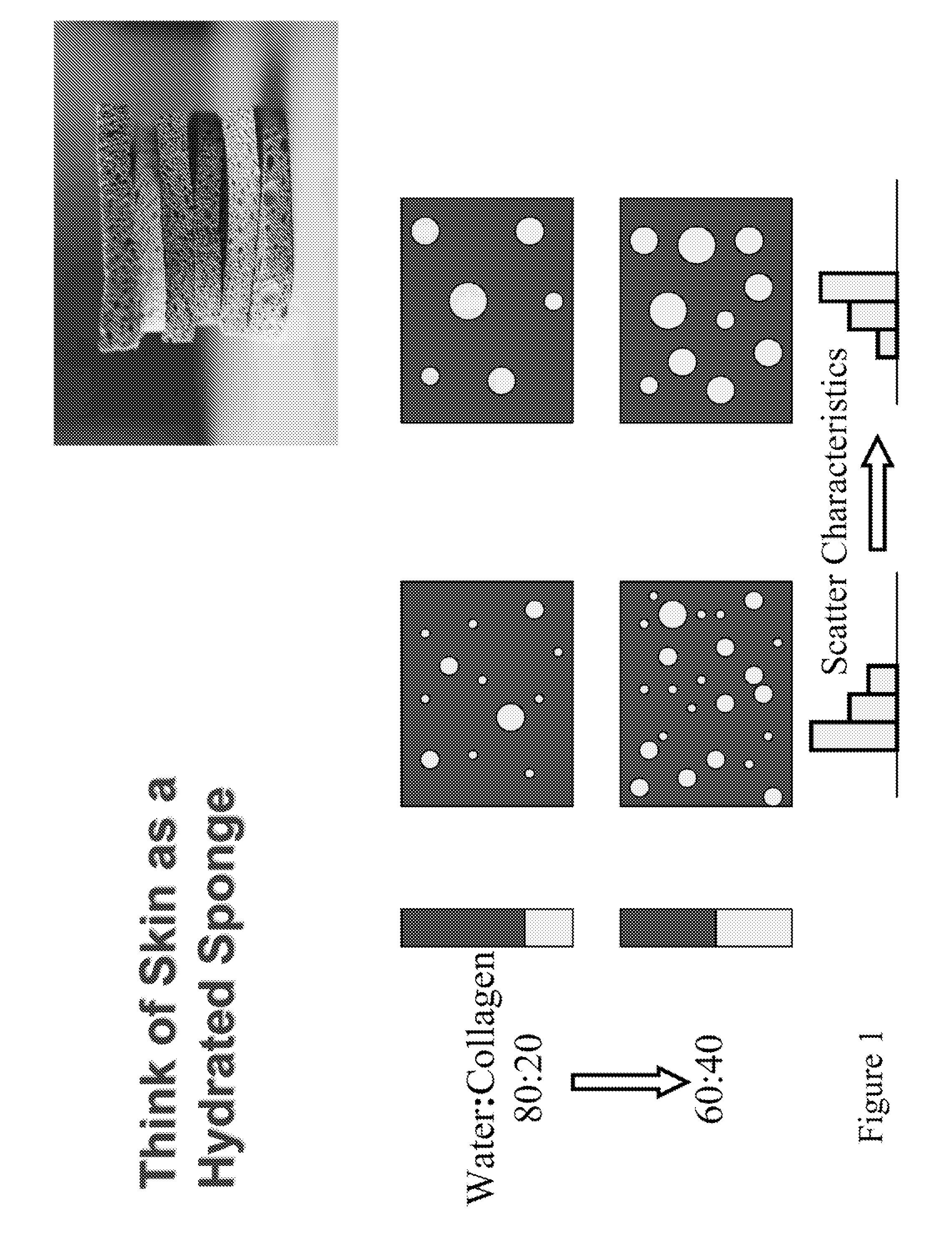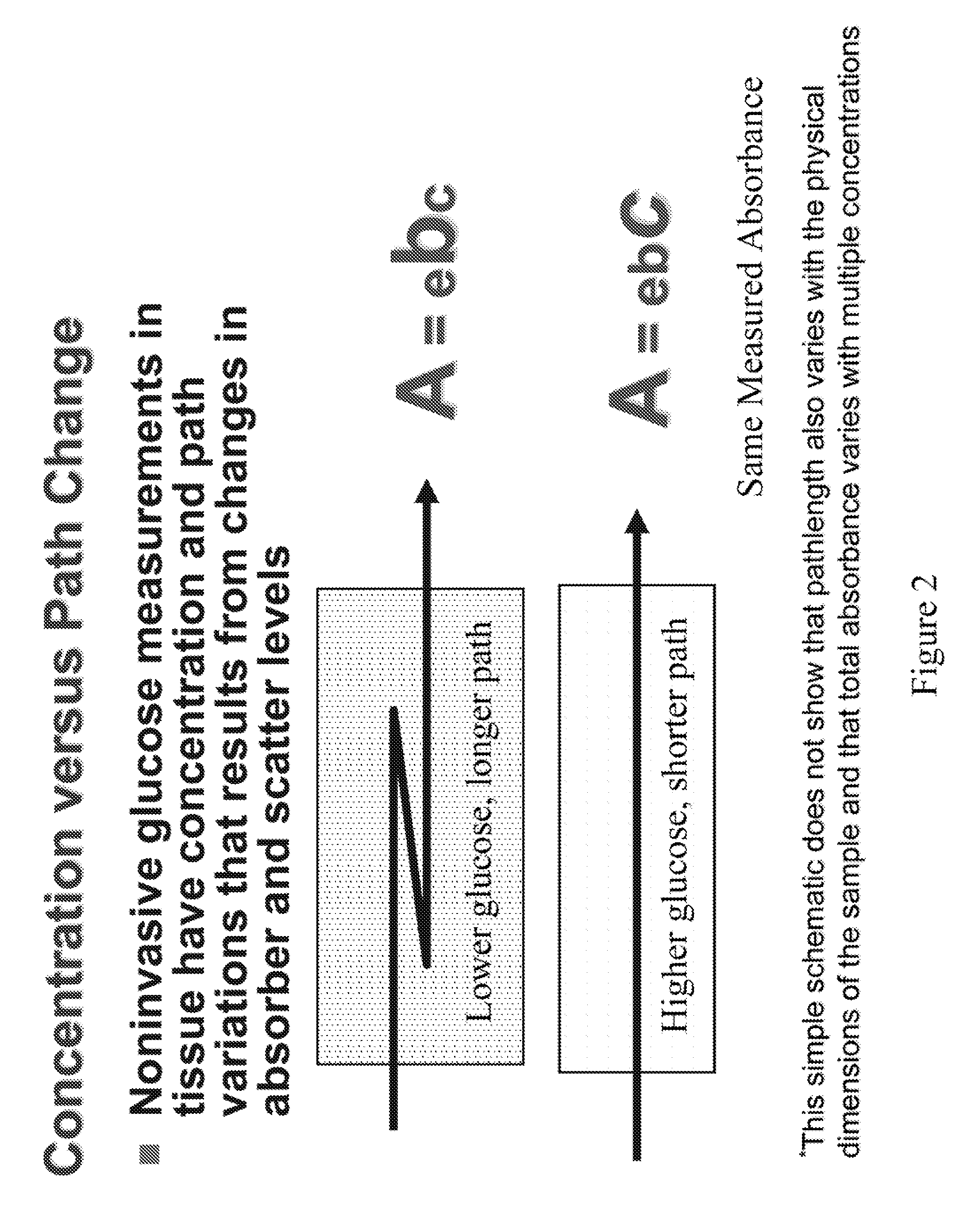Methods and Apparatuses for Noninvasive Determinations of Analytes using Parallel Optical Paths
a parallel optical path and measurement method technology, applied in the field of measurement of material properties, can solve the problems of system itself introducing tissue noise, changes in tissue optical properties can contribute to tissue noise, and no group has demonstrated a system that generates adequate noninvasive glucose measurements, etc., to achieve accurate noninvasive determination of tissue properties, discourage light collection, and encourage light collection. preferential
- Summary
- Abstract
- Description
- Claims
- Application Information
AI Technical Summary
Benefits of technology
Problems solved by technology
Method used
Image
Examples
example embodiment
[0047]As illustrated in FIG. 3, optical samplers designed for tissue sampling have focused on controlling the numerical aperture of the light 101, the illumination and collection angles 103 and the distance between source and collection fibers 102. Relative polarization of the illumination and collection light can also be used 104. FIG. 4 is a schematic illustration of a tissue sampler according to the present invention. A light source 201, e.g., a broadband light source, communicates light, e.g., by focusing or collimating element 202, to the input aperture of a spectrometer 203, e.g. a Fourier Transform spectrometer. The spectrometer 203 communicates light from its output port, e.g., using a focusing element 204, to a tissue surface 208. The optical path from the spectrometer 203 to the tissue surface 208 can also include a polarizer 205, a quarter wave plate 206, or both, to cause light incident on the tissue surface 208 to have controlled linear or circular polarization.
[0048]Li...
embodiments and improvements
ADDITIONAL EMBODIMENTS AND IMPROVEMENTS
[0054]A sampling system such as described in the example embodiment above can be modified for specific performance objectives by one or more of the additional embodiments and improvements described below.
[0055]Auto Focus. A motorized servo system along with a focus sensor, such as that used in autofocus cameras, can be used to maintain a precise distance between the tissue and the spectral measurement optical system during the measurement period. The tissue, the optical system, or both can be moved responsive to information from an autofocus sensor to cause a predetermined distance between the tissue and the optical system. Such an autofocus system can be especially applicable if the sampling site is the back of the hand or the area between the thumb and first finger. For example if a hand is placed on a flat surface, the auto focus mechanism could compensate for differences in hand thickness.
[0056]Tissue Scanning. The tissue can be scanned dur...
PUM
 Login to View More
Login to View More Abstract
Description
Claims
Application Information
 Login to View More
Login to View More - R&D
- Intellectual Property
- Life Sciences
- Materials
- Tech Scout
- Unparalleled Data Quality
- Higher Quality Content
- 60% Fewer Hallucinations
Browse by: Latest US Patents, China's latest patents, Technical Efficacy Thesaurus, Application Domain, Technology Topic, Popular Technical Reports.
© 2025 PatSnap. All rights reserved.Legal|Privacy policy|Modern Slavery Act Transparency Statement|Sitemap|About US| Contact US: help@patsnap.com



